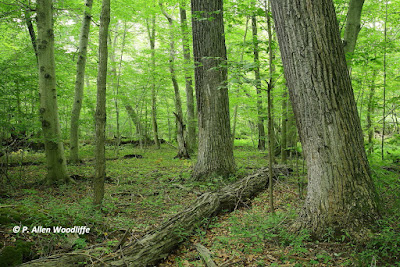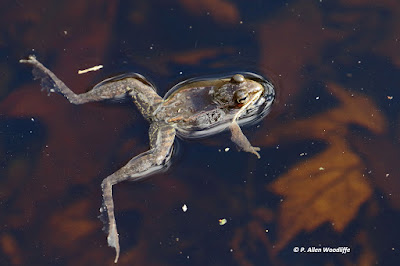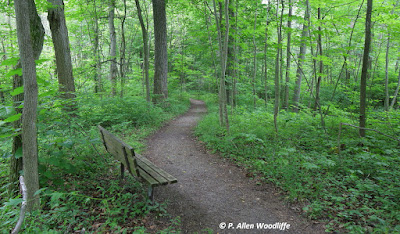Rondeau has been an important part of my life for more than 60 years! From:
-visiting my grandparents at their cottage as a young tyke;
-to biking and exploring with my friends as a teen;
-to working at the park over a 13 year period, and ten of those as the park naturalist;
-living full time in the park for five and a half of those years;
-a continued connection with the park as part of my MNR role;
-to upwards of 60 or more visits a year in my retirement years,
There is no question that Rondeau has had a huge influence on me.
One could spend quite a few posts covering the features and importance of Rondeau to Ontario's natural heritage. In fact I am writing a book on exactly that, although I cannot say when it will be on the book shelves. Hopefully sooner rather than later, but I've been saying that for awhile now.
Rondeau is a sandspit along the Lake Erie shoreline. It encompasses the majority of the peninsula as well as about a third of Rondeau Bay, totalling 3254 hectares (~8040 acres).
There are several significant habitat types here, including: a dynamic beach and dune system....
...a pine-oak forest and beech-maple forest
 |
| Pine-oak forest type |
 |
| American Beech-Sugar Maple type |
-more than 70 kilometres of linear slough/swamp forest...
...as well as an extensive coastal marsh
If you took an east-west cross-section of Rondeau about mid way down the peninsula as shown in the next photo, you would cross all of these habitats.
With Rondeau's southern location, moderate climate resulting from being surrounded by the lake, as well as the diversity of habitats, there is an impressive abundance of species. Rondeau has over 850 species of plants recorded. There are 362 species of birds on the park's checklist. In fact of all of the 300+ parks in the provincial park system, Rondeau has the greatest number of rare species of any park in the province, except for one or two nature reserves.
Red Mulberry (Morus rubra) is one of the rarest trees in Canada, found only in three or four other locations in Ontario. It is legally endangered.
Most of the other locations have been heavily affected by the hybridization with the non-native White Mulberry. Rondeau's population appears to be less affected by the hybridization.
One of the rarest plants in Canada is a diminutive orchid called Nodding Pogonia (Triphora trianthophora). It only occurs at Rondeau. Needless to say it is legally endangered too.
A rare breeding bird is the Acadian Flycatcher. It is an endangered species and for many years Rondeau was considered the stronghold for it in Canada. In recent decades it has been found in a number of other locations in southern Ontario, but it remains endangered.
The sloughs are home to one of Canada's rarest breeding birds, the brilliant Prothonotary Warbler. It was first discovered nesting in Canada at Rondeau in the early 1930s, and the park has been considered the stronghold for the species. In an average year, there are likely fewer than 15 pairs of this endangered species in Canada. While back in the early 1980s there were at least 24 pairs at Rondeau, and possibly as many as 50, sadly the population has declined with probably only 3-4 pairs nesting in an average year.
The sloughs are home to many creatures, but a visit in early April will feature the song and commotion of breeding frogs, especially Chorus and Wood Frogs as well as Spring Peepers.
 |
| Wood Frog |
A much more wide-spread woodpecker, although never common, is the crow-sized Pileated Woodpecker, ranging through all of the woodland areas of Rondeau.
A bird that almost everyone stops to watch when it is seen is the Bald Eagle. Rondeau has the longest record of occupied territory of this species of any place in southern Ontario. At one point, in the 1960s, between Long Point and the Detroit River, there was only one pair of eagles occupying a territory, and that was the pair at Rondeau. They typically have nested closest to the marsh, and currently there are two pairs.
 |
| Immature Bald Eagle |
There were a few years where they weren't successful in raising any young, but they tried. For many years they were a legally endangered species in Ontario. Of course in the last two or three decades they have become much more common place even in southern Ontario. Currently there is an estimated 18 active pairs in Chatham-Kent alone! It has been down-listed from endangered to special concern.
Rondeau is a delight to visit at any time of the year.


















An extraordinary, diverse and amazing place.Lovely.
ReplyDeleteIt is indeed, Paula....thanks for your comments.
DeleteWhen you summarize it all at once like that, it reminds me why it really is one of Ontario's most important natural areas.
ReplyDeleteThanks, Furry Gnome. It doesn't get the profile that some parks do, but it is indeed one of the most significant from a biodiversity standpoint, both of habitat and species.
Delete